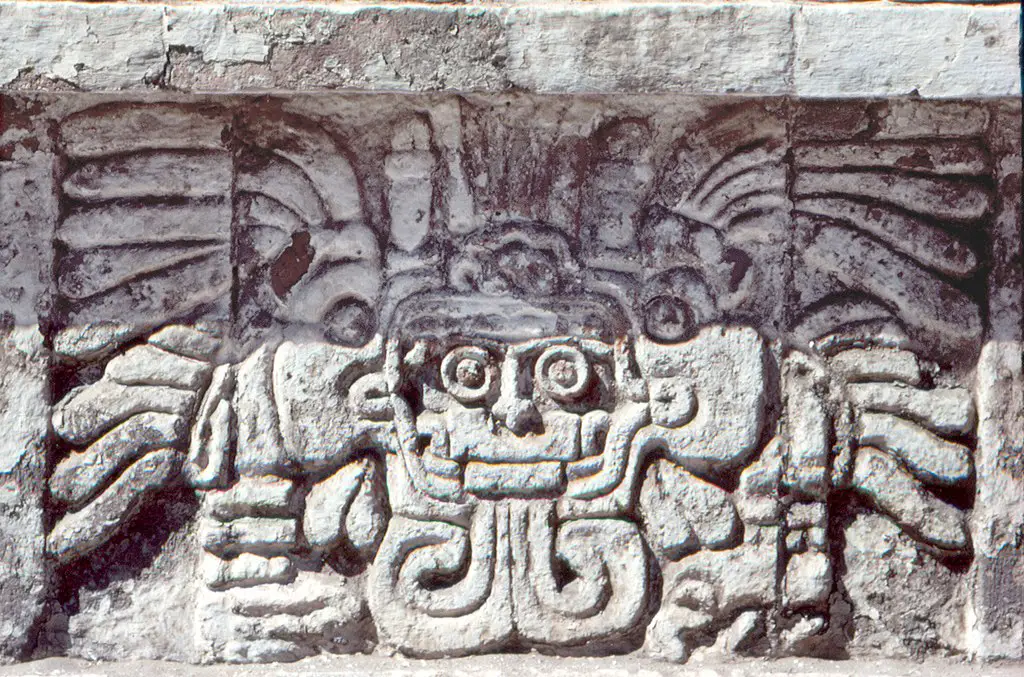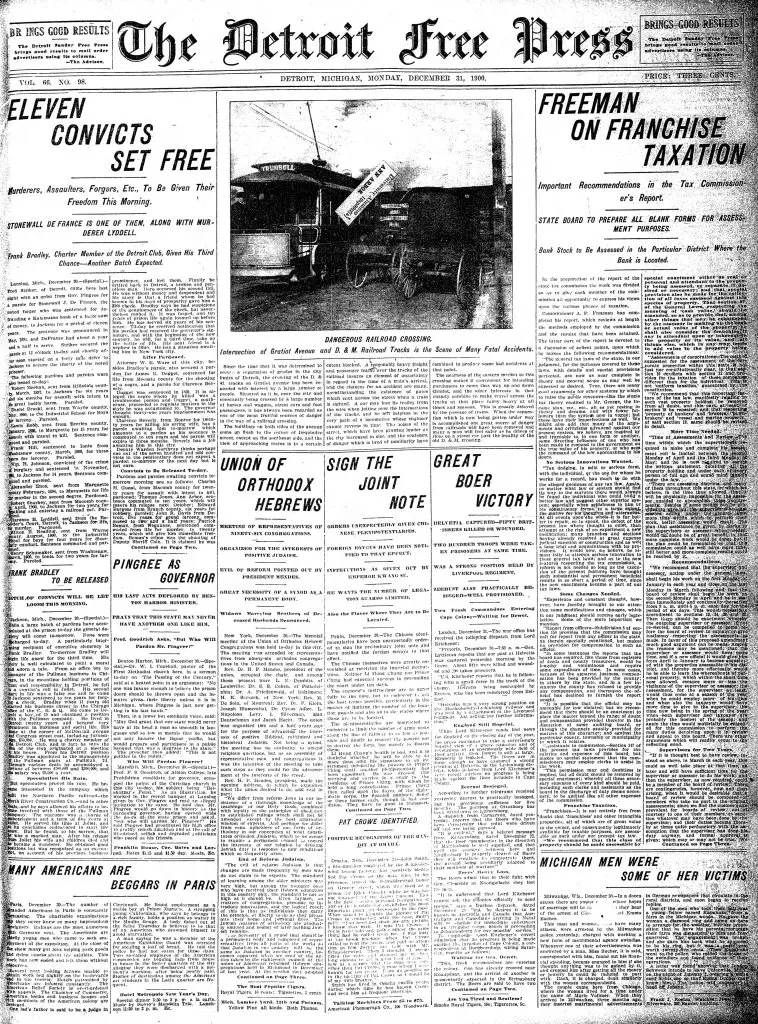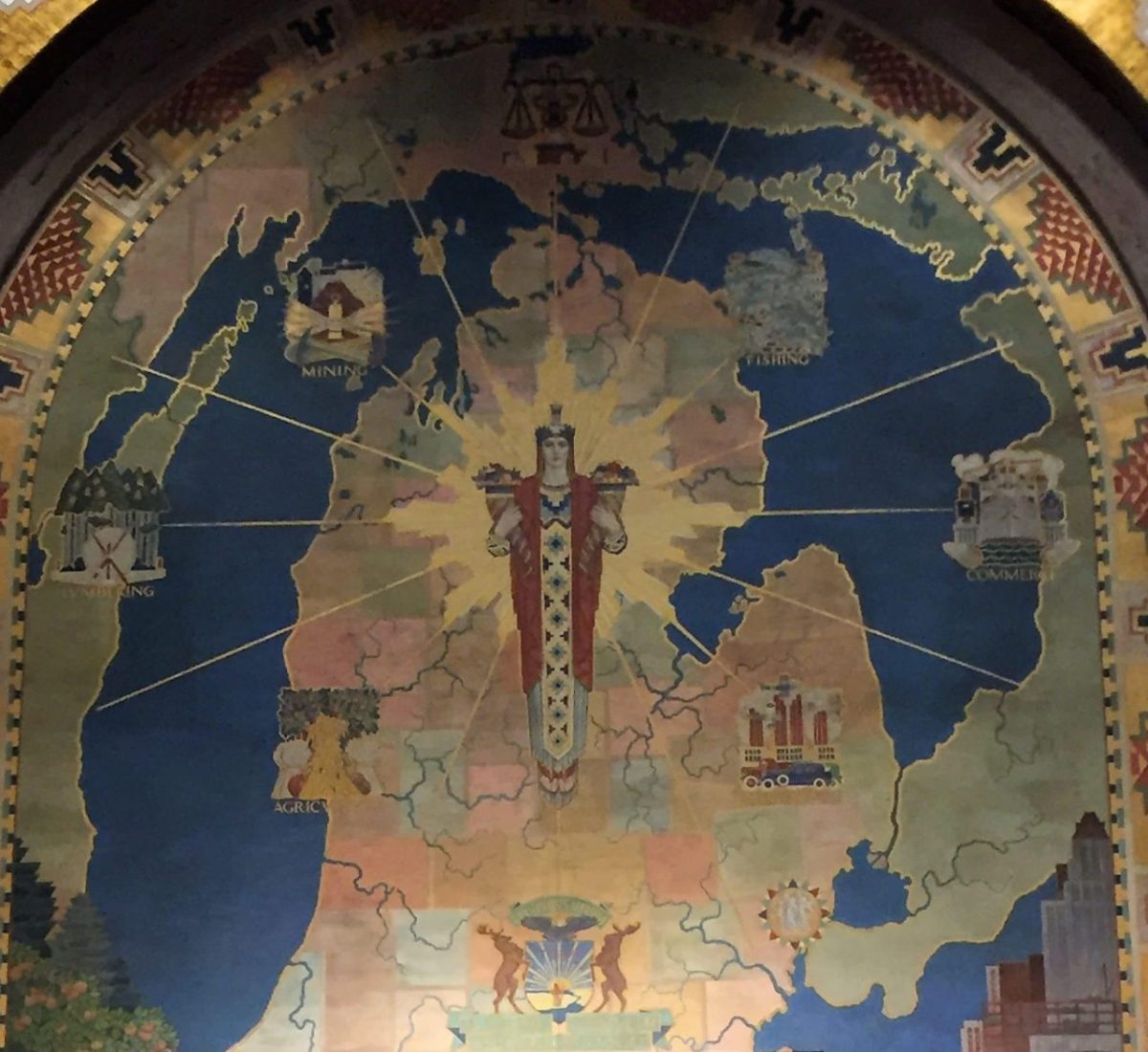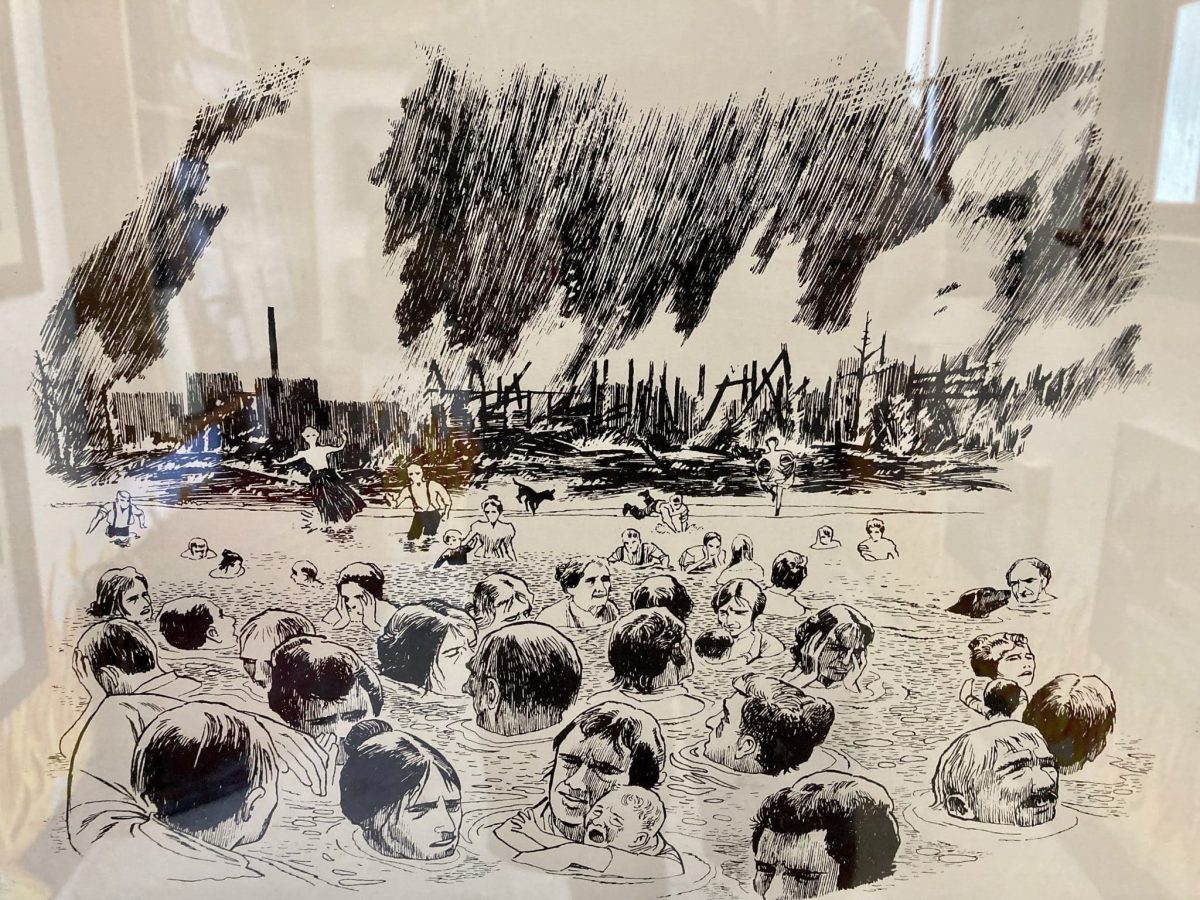An obscure story in the Detroit Free Press in 1900 offers a fantastic tale of a prehistoric wall created by a culture long assumed to be from Central America, who took refuge in Michigan’s Thumb when the region was still an island.
In a fascinating historical article from the Detroit Free Press dated December 31, 1900, Prof. Crisper Emanuel claims to have discovered traces of a prehistoric race in Michigan’s “thumb” region. He believes a stone wall in the area was built by a branch of the Toltec race, who engaged in a conflict with the mound builders before the arrival of Columbus. However, it is important to approach such claims with skepticism, as contemporary archaeological research has not produced substantial evidence to support these findings. However, it is a fascinating tale! Join us as we delve into this intriguing story and explore the possible connections between ancient civilizations and Michigan’s history.
Featured image User: Luidger, CC BY-SA 3.0, via Wikimedia Commons
Spaniards Find in the Thumb

Traces of Prehistoric Race, Weapons Etc.
Hieroglyphics like those of the Teltecs.
Professor Sent From Madrid in the Interest of Science

From The Detroit Free Press. December 31, 1900
The Saginaw correspondent of the Chicago American is responsible for the following interesting story, mention of which was made In The Free Press some months ago:
Prof. Crisper Emanuel of the Royal College of Learning, Madrid, Spain, has made discoveries in what is known as “the thumb” of Michigan. He has found traces of a great prehistoric race that occupied North America thousands of years before the sailing of Columbus from Genoa.
A stone wall, Measuring 15 to 20 feet in height and somewhat wider at the 11s base, has been found buried in the marshes of eastern Michigan and extending about 25 miles from a point near Sebewaing to the little village of Parisville. It traverses parts of three counties and makes the southern boundary line of “the thumb” a considerable peninsula formed by the indention of the Saginaw Bay on the eastern shoreline of Michigan.
Wall Hidden For Centuries
The wall is in good preservation and has escaped discovery for so long only because of the marshy land in which it is buried. |This marsh has been covered deeply with underbrush. Practically impenetrable, and until the forest fires burned over the entire district last summer, very little was known of what lay beneath. Farmers in the vicinity noted with curiosity what seemed to be a natural stone walk running through the marsh for many miles, appearing just above the earth and at points sinking entirely from sight.
Fernando Emanuel, living near Cass City, described It at considerable length in a letter to his cousin, Prof. Emanuei, at Madrid.“The university exists under the patronage of the Queen Regent. After investigation, I took the matter up and sent Prof. Emanuel to this country. Since arriving in Michigan last September, he has kept the matter a secret. When seen by a representative of the American, Prof. Emanuel said:
Important Discovery Of A Prehistoric Wall In Michigan
“I had intended to keep the matter entirely secret until the explorations are completed: However, I can say I have made discoveries -of the greatest importance to ‘students of American archaeology. This wall is of mammoth construction and gives evidence of its origin before either the present Indians or their predecessors, the mound builders, took possession of the land.
I believe it to be the work of a branch ‘of the great Toltec race and the scene of the last fierce battle between those prehistoric people and the flood of savage mound builders which devastated the country and later erected the earthen fortifications in the Ohio and Mississippi valleys. The ghastly remains of that final hand-to-hand conflict still remain in scattered bones and skulls, and weapons.
Thinks “The Thumb” Used to Be an Island
I think that what you so appropriately all. ‘the thumb,’ was once a separate island. I have made considerable excavations and find that the wall is from fifteen to twenty feet in height and at some places, more. It sits upon a natural rock foundation that does not extend south of the wall. This would carry out the island theory. The wall is built of immense rocks, many of them.
‘weighing several tons, and these must have been carried by some great power to the place where they now rest. I have found remains of a very hard mortar, like nothing of which I have knowledge. Its manufacture Is evidently similar to that of the mortars found in the excavations along the Nile and has now become a lost art. On the north side. the wall is comparatively smooth, ‘while the opposite side is rough and jagged.
Hieroglyphics Like Those of the Toltees
Hatohets and heavy hammers of stone, Which I found nearby, show the implements of warfare which were used, and there are also curious weapons of copper. This metal Is singularly hard and resistant and must have been hardened by a process that died with the extermination of the race.
Also found a few metal tablets with hieroglyphics engraved thereon similar to those of the Toltecs found in Mexico. I have not yet been able to decipher them, but I hope eventually to trace the hidden words of this long silent race.
My theory is that the Toltec race became divided during the mad rush of the Aztecs, mound builders, from the north. Part were driven southward and eventually found their way to Mexico ‘and Central America. The other and much smaller portion of the race was forced to seek refuge
on the peninsula of Michigan and finally fortified the island, which has since risen from the water to form ‘the thumb.” The immense wall we discovered was erected to protect them from the on-slaughts of their fiercer enemies. Who did not possess the inventive genius of the Toltec race.
To the Smithsonian Institution
“I am here purely in the interest of science, and when to complete my work will be presented to the Smithsonian Institution, with the compliments of the Royal College of Learning, Madrid. The book which I shall write upon my discoveries will be dedicated, by royal permission, to Alphonso, King of Spain.”
According to Prof. Emanuel, the value of the discoveries from an archaeological and at this point cannot be overestimated.
He has already pieced together several skeletons of both the Teltecs and the larger race of mound builders, and with the tablets and other articles and relics uncovered, these will be forwarded to Washington when everything Is completed. Some months ago, another resident of the vicinity noticed the peculiarity of the formation and wrote of it to prominent members of the American Archaeological Society; They did not consider the reports worthy of investigation. It remained for a Spanish scholar to delve to the bottom of the matter and develop the astonishing discoveries made recently in “the thumb.’ Prof. Emanuel «speaks English fluently and ‘also converses readily In several other languages aside from his native tongue.
Final Thoughts About A Prehistoric Wall in Michigan
While the claims made by Prof. Crisper Emanuel in the Detroit Free Press article may lack substantial evidence, Michigan still boasts other captivating prehistoric finds. One such discovery is the Stonehenge-like structure submerged in Lake Michigan near Traverse City, which has sparked curiosity and debate among researchers. Additionally, the underwater wall in Lake Huron has been identified as an ancient hunting structure used by prehistoric people to corral and catch caribou.
These remarkable discoveries continue to shed light on the rich history of Michigan and the people who once inhabited its lands. As we explore these enigmatic finds, we are reminded of the importance of preserving and appreciating our heritage while continuing to seek knowledge about the ancient civilizations that shaped our world. Join us on Thumbwind.com for more stories that unveil the fascinating mysteries hidden within Michigan’s past.





